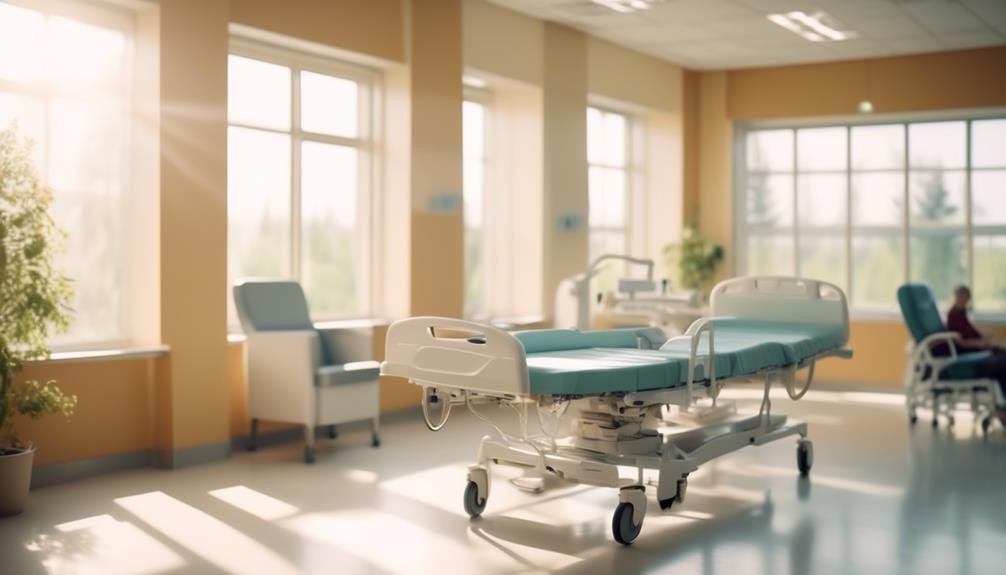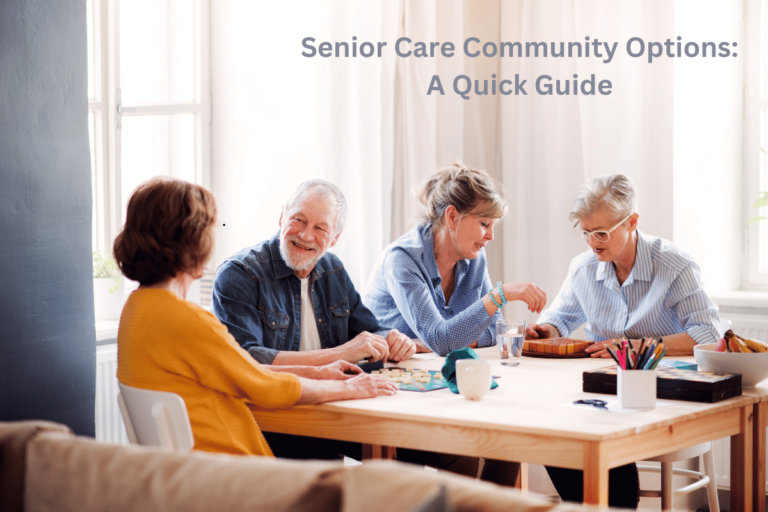Designing Healthcare Spaces for Optimal Patient Comfort and Recovery
Designing healthcare spaces for optimal patient comfort and recovery is a multifaceted endeavor that requires a deep understanding of the intricate interplay between physical environments and patient well-being.
From the colors on the walls to the layout of furniture, every aspect of a healthcare space can significantly impact a patient's experience and ultimately, their recovery.
In this discussion, we will explore the fundamental principles of patient-centered design, the influence of elements such as color, lighting, and nature, as well as the integration of technology to enhance patient well-being.
Additionally, we will delve into the role of art, aesthetics, and functional accessibility in creating healing environments that prioritize patient comfort and support their journey towards recovery.
Key Takeaways
- Patient-centered design prioritizes the comfort, well-being, and holistic recovery of patients.
- Color and lighting play a crucial role in influencing patient comfort and promoting relaxation.
- Ergonomic furniture, efficient space utilization, and optimized layout contribute to patient comfort and overall well-being.
- Incorporating nature and biophilic design elements enhance well-being, reduce stress, and aid in the healing process.
Importance of Patient-Centered Design
Patient-centered design is an essential aspect of creating healthcare spaces that prioritize the comfort, well-being, and holistic recovery of patients. By focusing on patient-centered design principles, healthcare spaces can be transformed into environments that promote healing and well-being. Patient engagement is at the core of this approach, ensuring that the needs and preferences of patients are carefully considered in the design process.
Designing healthcare spaces with patient-centered principles involves creating environments that are not only functional but also aesthetically pleasing and emotionally supportive. It requires a deep understanding of the physical and emotional needs of patients, as well as an awareness of the impact of the environment on their well-being. Incorporating elements such as natural light, soothing colors, and comfortable furnishings can contribute to a sense of calm and comfort for patients.
Furthermore, patient-centered design principles also emphasize the importance of flexibility and adaptability in healthcare spaces. This allows for personalized care and accommodates the diverse needs of patients. By integrating technology and innovative design solutions, healthcare spaces can be tailored to enhance patient experience and support their journey towards recovery.
Impact of Color and Lighting
Understanding the impact of color and lighting on healthcare spaces is crucial for promoting patient comfort and recovery. Color psychology plays a significant role in creating a soothing and healing environment, while the benefits of natural light are well-documented in fostering a sense of well-being and aiding in the healing process.
Color Psychology
Using color psychology and strategic lighting in healthcare spaces can significantly impact the comfort and recovery of patients. When considering color psychology in healthcare design, it's important to take into account the following:
- Calming Hues: Soft blues and greens can create a soothing and tranquil environment, promoting relaxation and reducing stress for patients.
- Ergonomic Lighting: Implementing adjustable lighting options can help regulate circadian rhythms and improve sleep patterns, crucial for patient recovery.
- Inclusive Design Trends: Incorporating a variety of colors and lighting options to accommodate diverse patient needs, including those with visual impairments or sensory sensitivities.
Natural Light Benefits
The incorporation of natural light in healthcare spaces is essential for creating a healing environment that promotes patient comfort and enhances the overall well-being of individuals undergoing treatment. Maximizing natural light through thoughtful architectural design not only reduces the reliance on artificial lighting but also has significant wellness benefits.
Biophilic design principles emphasize the connection between humans and nature, and the inclusion of natural light is a key aspect of creating healing environments. Exposure to natural light has been linked to improved mood, reduced stress, and faster recovery times for patients. Furthermore, it helps in regulating sleep-wake cycles, which is crucial for patients' overall well-being.
Integrating ample natural light into healthcare spaces is a practical and innovative approach that contributes to a more compassionate and supportive patient care environment.
Considerations for Furniture and Layout
When considering furniture and layout in healthcare spaces, it is essential to prioritize both functionality and comfort to create an environment that promotes patient well-being and aids in their recovery.
- Ergonomic Furniture: Choosing ergonomic chairs and adjustable beds can significantly enhance patient comfort and support their recovery process. Ergonomic furniture is designed to provide proper support and reduce discomfort, which is particularly crucial for patients spending extended periods in healthcare settings.
- Space Utilization: Efficient use of space is vital in healthcare environments to ensure accessibility and comfort for patients, visitors, and healthcare professionals. Optimizing the layout to allow for easy navigation and sufficient privacy can contribute to a more pleasant and supportive atmosphere.
- Comfortable Waiting Areas: Designing comfortable and welcoming waiting areas with well-placed seating, soothing colors, and access to natural light can help reduce patient anxiety and create a more calming environment for both patients and their families.
Incorporating ergonomic furniture and thoughtful space utilization into healthcare design not only enhances the physical comfort of patients but also contributes to their overall well-being and aids in the recovery process.
Incorporating Nature and Biophilic Design
Incorporating elements of nature and biophilic design into healthcare spaces offers a holistic approach to fostering healing and well-being for patients and creating a nurturing environment for all stakeholders involved.
Biophilic elements, such as natural light, indoor plants, and healing gardens, can significantly contribute to the overall well-being of patients, staff, and visitors. Nature integration within healthcare spaces has been shown to reduce stress, anxiety, and pain while promoting a sense of calm and tranquility.
By incorporating sensory experiences, such as the sound of running water or the sight of greenery, healthcare environments can create a more soothing and restorative atmosphere for patients. Healing gardens, in particular, provide a space for relaxation, social interaction, and connection with nature, which can positively impact the emotional and physical recovery of patients.
Additionally, biophilic elements can enhance air quality and regulate temperature, contributing to a healthier indoor environment.
Art and Aesthetics in Healing Environments
Art and aesthetics play a crucial role in creating healing environments that promote patient comfort and well-being. The presence of art has been shown to have a healing power, positively impacting patients' emotional and mental states.
Healing Power of Art
In healthcare environments, the integration of carefully selected aesthetic elements has been shown to positively impact patient comfort and aid in the process of recovery. The healing power of art plays a crucial role in creating supportive and restorative spaces for patients.
Key points to consider include:
- Art therapy as a form of creative expression can provide patients with a non-verbal outlet for processing emotions and experiences.
- Incorporating visually stimulating artwork can help reduce stress and anxiety, promoting a sense of calm and well-being.
- Engaging patients in art-related activities, such as painting or crafting, can foster a sense of empowerment and control over their healing journey.
Aesthetics and Well-Being
The role of aesthetics and art in healing environments extends beyond providing visual stimulation. It encompasses the fundamental connection between aesthetics and patient well-being, fostering a sense of comfort and support conducive to the healing process.
Aesthetic appeal plays a crucial role in creating a healing environment by evoking positive emotions and reducing stress. When healthcare spaces are thoughtfully designed with attention to aesthetics, they have the power to positively impact the emotional well-being of patients, creating a tranquil and uplifting atmosphere.
Art, in particular, has been shown to have a profound emotional impact, offering a source of inspiration, hope, and comfort. Integrating art and aesthetics into healthcare spaces is an innovative approach that recognizes the importance of holistic healing, acknowledging the profound influence of the environment on patient well-being.
Creating Calming Environments
With careful attention to design and aesthetics, healthcare spaces can be transformed into soothing environments that promote patient comfort and facilitate the healing process.
- Stress Reduction: By incorporating calming colors, natural light, and tranquil artwork, healthcare spaces can help reduce stress and anxiety for patients, visitors, and staff.
- Sensory Stimulation: Engaging the senses through elements such as soothing music, nature-inspired decor, and comfortable furnishings can create a calming and healing atmosphere.
- Patient Preferences and Environmental Control: Offering patients control over their environment, such as adjustable lighting and temperature settings, can empower them to create a space that suits their individual needs and preferences.
Technology and Patient Well-being
Advanced technology integrates seamlessly into healthcare spaces, enhancing patient well-being and fostering an environment of healing and comfort.
The integration of technology in healthcare environments has revolutionized the patient experience, offering innovative solutions to improve comfort, communication, and overall wellness.
From interactive bedside terminals that provide entertainment and communication options to advanced monitoring systems that ensure patient safety and well-being, technology plays a pivotal role in enhancing the overall patient experience.
Moreover, the use of virtual reality and augmented reality technologies has shown promising results in reducing pain, anxiety, and stress for patients undergoing various medical procedures.
Additionally, telemedicine and remote monitoring technologies enable patients to receive quality care without the need for frequent hospital visits, contributing to their overall well-being and convenience.
Furthermore, the integration of electronic health records and digital communication platforms streamlines the coordination of care, ensuring that patients receive timely and efficient medical attention.
Creating Functional and Accessible Spaces
Designing healthcare spaces that are both functional and accessible is essential for ensuring the well-being and comfort of patients during their recovery journey.
- Efficient Patient Circulation: A well-designed layout should facilitate easy movement for patients, visitors, and healthcare staff, reducing congestion and enhancing overall accessibility.
- Inclusive Design Features: Incorporating adjustable beds, easy-to-reach amenities, and clear signage ensures that patients of all abilities can navigate the space comfortably and confidently.
- Adaptive Equipment and Furniture: Integrating versatile furniture and adaptable medical equipment allows for customization based on patient needs, promoting a more functional and personalized environment.
Functional accessibility and patient circulation play a crucial role in creating healthcare spaces that prioritize patient comfort and recovery. By incorporating these elements into the design process, healthcare facilities can optimize the overall experience for patients and improve their journey towards wellness.
It is imperative to consider the diverse needs of patients and ensure that the space is not only aesthetically pleasing but also highly functional and accessible.
Conclusion
In conclusion, the design of healthcare spaces plays a crucial role in patient comfort and recovery. By incorporating patient-centered design principles, thoughtful use of color and lighting, nature-inspired elements, and accessible technology, healthcare environments can promote well-being and healing.
When art and aesthetics are integrated, they can provide a sense of calm and comfort. Overall, a compassionate and practical approach to designing healthcare spaces can greatly impact patient experiences and outcomes, creating visually and functionally optimal environments for healing and recovery.







